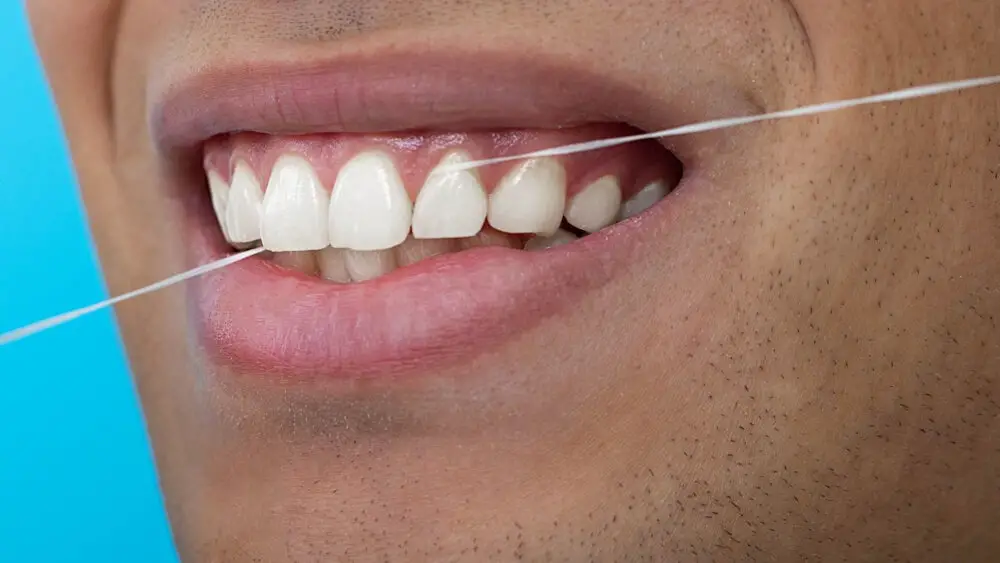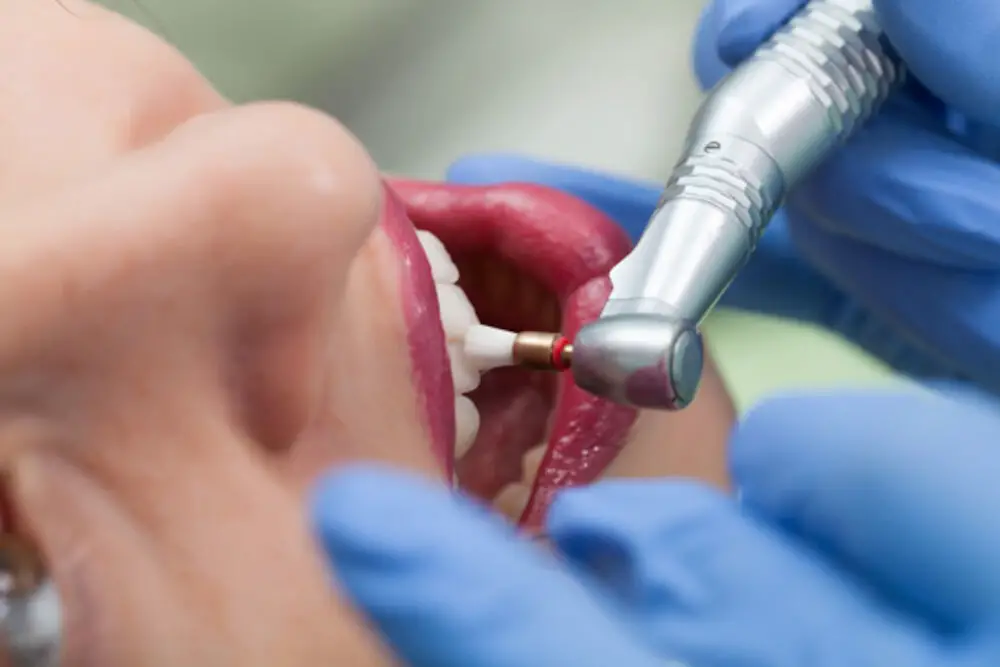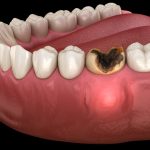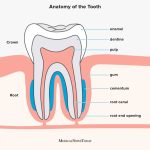Double Trouble: Exploring the Unique Dental Features of Old World Monkey Molars

As primates, Old World monkeys have long been a subject of fascination for scientists and researchers. They are known for their unique physical characteristics, including their dental features, which have evolved over time to help them adapt to their environment and diet. Among these dental features, the molars of Old World monkeys are particularly remarkable, as they have evolved to be highly specialized and adapted to their specific dietary needs. In this article, we will explore the unique dental features of Old World monkey molars, and how they have evolved to meet the challenges of their environment and diet. We will examine the various types of molars found in Old World monkey species, and how they differ from those found in other primates and mammals. Additionally, we will investigate the role that these molars play in the survival and evolution of Old World monkeys, and what they can tell us about the broader picture of primate evolution.
Old World Monkeys are a diverse group of primates that are found in Africa and Asia. These primates are known for their unique molars that differ from those of other primates. The molars of Old World Monkeys are bilophodont, meaning they have two main ridges that run parallel to each other. This is in contrast to the molars of New World Monkeys, which are characterized by three main ridges that intersect in a Y-shape. The unique bilophodont molars of Old World Monkeys are thought to be an adaptation to their diet, which consists of tough, fibrous vegetation. The ridges on their molars help them to grind and crush tough plant material more efficiently, allowing them to extract as much nutrition as possible from their food.
The study of dental features in evolutionary biology is crucial in understanding the evolutionary history of primates. Teeth provide valuable insights into the dietary adaptations of primates and their evolutionary relationships. In the article \Double Trouble: Exploring the Unique Dental Features of Old World Monkey Molars,\ the authors highlight the importance of studying the molars of old world monkeys to understand their evolutionary history. The unique dental features of old world monkeys, such as the presence of double ridges on their molars, provide evidence of their dietary adaptations and evolutionary relationships with other primates. Understanding the dental features of primates can help us better understand their behavior, ecology, and evolution, and provide important insights into the history of life on Earth.
The Anatomy of Old World Monkey Molars

The old world monkey molars are a fascinating subject of study for dental anatomists. These primates have evolved unique dental features that have allowed them to adapt to their diverse lifestyles and dietary needs. The molars of old world monkeys are characterized by a complex structure, with multiple cusps and ridges that help them break down tough plant material. The molars can be divided into four main cusps, with additional smaller cusps and ridges that enhance their grinding ability. This structure is particularly important for monkeys that feed on tough, fibrous vegetation, as it allows them to extract as much nutrition as possible from their food. One of the most striking features of old world monkey molars is the presence of a distinct cingulum. This is a raised ridge that runs around the base of the tooth, separating the crown from the root. The cingulum is particularly prominent in some species, such as baboons and macaques, where it forms a thick, continuous band that encircles the entire tooth. It is thought that the cingulum helps to strengthen the tooth and prevent it from fracturing under the forces of chewing. Additionally, the cingulum may play a role in the attachment of the periodontal ligament, which helps to anchor the tooth in the jaw. Overall, the unique dental features of old world monkey molars provide a fascinating glimpse into the evolution of these primates and the ways in which they have adapted to their environments.
Old World Monkeys, such as baboons and macaques, have intricate molars with unique dental features. These molars are composed of four cusps – two major and two minor – that are arranged in a pattern called a bilophodont. The cusps are connected by ridges, which form the occlusal surface of the molars. The anterior cusps are usually larger and more complex than the posterior ones, and the ridges between them are longer and more pronounced. The posterior cusps are usually smaller and more simple, and their ridges are shorter and less pronounced. The molars of Old World Monkeys also have thick enamel, which helps them withstand the forces of chewing tough vegetation. The dental formula of Old World Monkeys is 2.1.2.3, which means they have two incisors, one canine, two premolars, and three molars on each side of their upper and lower jaws.
Old World monkeys are a diverse group of primates that have evolved unique dental features to adapt to their varied diets. Compared to other primates, Old World monkey molars have evolved to have more complex cusps and ridges, allowing them to efficiently break down tough plant materials and hard-shelled insects. Additionally, they have a larger number of molars than most other primates, which is believed to be an adaptation to their more abrasive diets. Furthermore, Old World monkey molars exhibit a greater degree of variability in their morphology, reflecting the diverse range of habitats and diets that these primates inhabit. Overall, the unique dental features of Old World monkey molars reflect the complex interplay between diet, morphology, and evolution in these highly adaptive primates.
Old World Monkey molars are fascinating dental structures that have evolved to perform a wide range of functions. The molars are composed of different parts, including the crown, cusp, enamel, dentin, and pulp. The crown is the visible part of the tooth that is covered by enamel, a hard and protective layer that helps to resist wear and tear. The cusps are the raised points on the surface of the crown that enable the molars to grind and crush tough foods. The dentin is the layer of tissue that lies beneath the enamel and forms the main bulk of the tooth. The pulp is the soft tissue that contains nerves and blood vessels and is located in the center of the tooth. Understanding the different parts of Old World Monkey molars can provide insights into their unique dental adaptations and help us better appreciate the diversity of life on Earth.
Function of Old World Monkey Molars

Old World monkey molars are specialized teeth that play a crucial role in their diet and overall health. These molars are designed to grind and crush tough plant materials, such as seeds, roots, and fibrous leaves, which form the mainstay of their diet. The molars have well-developed cusps and ridges that help to break down the tough plant materials, while their enamel layer provides resistance to wear and tear. The molars are also equipped with strong roots that anchor them firmly in place, allowing the monkeys to exert powerful biting and chewing forces without dislodging their teeth. In addition to their grinding and crushing functions, Old World monkey molars also play a role in social behavior and communication. The shape and size of the molars can vary between species and can be used to determine age and sex. Male monkeys, for example, tend to have larger and more robust molars than females, which can indicate their dominance status within a group. Furthermore, the dentition of Old World monkeys can also provide information about their evolutionary history and relationships with other primate species. By studying the dental features of these primates, researchers can gain insights into the ecological and environmental factors that have shaped their evolution over time.
Old World Monkey molars are uniquely designed to facilitate efficient chewing. These primates have a complex dental anatomy that allows them to process tough and fibrous vegetation. The molars are characterized by sharp shearing crests, which interlock when the jaws are closed. This occlusal pattern creates a cutting and grinding motion that breaks down food into smaller particles for easy digestion. Additionally, the molars have thick enamel layers that help to resist wear and tear during mastication. The combination of specialized dental features and strong jaw muscles enables Old World Monkeys to consume a diverse range of plant materials, making them vital members of their ecosystem.
When comparing Old World Monkey molars to other primate molars in terms of function, it is clear that they possess unique dental features that allow them to process a wide variety of foods. Unlike other primates, Old World Monkeys have a complex molar structure that includes a deep and wide crevice, known as the \Y-5 pattern,\ which allows them to efficiently grind tough and fibrous plant materials. In addition, their molars have thicker enamel and larger cusps, which increase their durability and wear resistance during prolonged chewing. These adaptations are crucial for Old World Monkeys, as their omnivorous diet requires them to consume a range of foods, from soft fruits to hard nuts and seeds. Overall, the dental features of Old World Monkey molars are well-suited to their unique dietary needs and are a testament to the remarkable adaptability of these primates.
The dental features of animals play a vital role in their survival and adaptation in the wild. For instance, Old World monkeys’ molars have evolved in a way that allows them to efficiently process tough and fibrous plant materials, which are commonly found in their natural habitat. The molars have multiple cusps and crests that aid in grinding and crushing food, making it easier to extract nutrients from their diet. Additionally, the shape and size of their teeth are adapted to their feeding behavior, allowing them to consume a diverse range of food sources and cope with seasonal variations in food availability. Thus, understanding the dental features of animals is essential in comprehending their ecological niche and how they have adapted to survive in their respective habitats.
Evolution of Old World Monkey Molars

Old World monkeys (OWMs) are a diverse group of primates that have evolved complex dental features to adapt to their varied diets. One of the most distinctive features of OWMs is their molars, which have undergone significant changes throughout their evolution. In particular, the evolution of the third molar, or M3, has been a subject of much interest to researchers. Unlike other primates, OWMs have a reduced M3, which is thought to have evolved as a result of dietary changes. In addition, OWMs have a distinctive pattern of cusps and crests on their molars, which is believed to be related to their ability to chew tough, fibrous plant material. The evolution of OWM molars can be traced back to the early Miocene, around 20 million years ago. At this time, OWMs had a more primitive molar structure, with four main cusps and a relatively simple occlusal (chewing) surface. Over time, the molars became more complex, with additional cusps and crests evolving to allow for more efficient grinding and chewing of tough, fibrous plant material. This trend continued throughout the evolution of OWMs, with the molars becoming increasingly specialized to meet the dietary needs of different species. Today, OWM molars are some of the most complex and specialized of any primate, reflecting the diverse range of foods that these primates consume in the wild.
Old World Monkey molars have undergone significant evolutionary changes over time to adapt to their dietary habits. The molar teeth of Old World Monkeys are characterized by the presence of a thick layer of enamel, which helps them break down tough and fibrous plant materials. The molars are also cusped, which means that they have raised points on the chewing surface, to increase the efficiency of grinding and crushing their food. Additionally, the molars have a larger surface area compared to their predecessors, which increases their ability to grind food. These dental adaptations have allowed Old World Monkeys to diversify their diet and thrive in different ecological niches, providing them with a competitive advantage in the wild.
The dental features of Old World monkeys have undergone significant changes in response to changes in their diet and environment. These primates have adapted to different ecological niches, which has resulted in variations in their dental morphology. For instance, frugivorous species have evolved broad, flat molars with low cusps to help them grind and crush soft fruits. In contrast, folivorous species have developed sharp, blade-like cusps to help them shred tough, fibrous leaves. Additionally, environmental factors such as temperature and humidity can also affect dental development. For example, monkeys living in cooler environments tend to have larger teeth to help them break down tougher food, while those in warmer environments have smaller teeth due to a diet that is less abrasive. Overall, the dental features of Old World monkeys are a testament to the remarkable ways in which animals can adapt to their surroundings.
The dental features of Old World Monkeys have been crucial to their success and diversification. For instance, their shearing crests on molars have allowed them to process tough and fibrous vegetation. Furthermore, their complex and diverse dentition has enabled them to exploit various food sources and adapt to different ecological niches. The presence of a specialized tooth in the lower jaw, the mandibular canine, has also been crucial in their social interactions and dominance hierarchies. Overall, the unique dental features of Old World Monkeys have played a significant role in their evolution and adaptive radiation, allowing them to thrive in a variety of habitats and ecological contexts.
Applications of Studying Old World Monkey Molars

The study of Old World monkey molars has significant applications in various fields, including evolutionary biology, paleontology, and dentistry. The intricate and unique features of these molars provide valuable insights into the evolutionary history of primates and their adaptations to different environments. For instance, the presence of shearing crests and cusps in certain species of Old World monkeys suggests that they have evolved to consume tough, fibrous vegetation. Additionally, the variation in molar morphology among different species can help researchers reconstruct the evolutionary relationships and diversification patterns of primates. Moreover, the study of Old World monkey molars has practical applications in dentistry. The similarity between the dental structure of Old World monkeys and humans has led to the use of these primates as models for studying dental diseases and treatments. For example, researchers have used Old World monkey models to investigate the effectiveness of dental implants and the impact of oral hygiene on dental health. Additionally, the study of Old World monkey molars can provide crucial information for the development of dental materials and techniques that mimic the natural structure and function of teeth. In summary, the study of Old World monkey molars is a fascinating and interdisciplinary field that has important implications for our understanding of primate evolution and dental health.
The study of dental features plays a crucial role in understanding the evolution and ecology of primates. This is particularly true when studying Old World Monkeys, whose molars have unique dental features that provide insight into their dietary preferences and adaptation to their environment. Dental features such as cusps, crests, and enamel thickness can reveal whether a primate was a folivore, frugivore, or omnivore, as well as indicate the type of vegetation they consumed. Furthermore, dental microwear analysis can provide information on the mechanical properties of food consumed by primates and their feeding habits. Therefore, studying dental features is essential to developing a comprehensive understanding of primate evolution and ecology.
The dental research on Old World Monkey molars can have numerous applications in both medicine and dentistry. For instance, the study of the complex structural organization of the enamel and dentin in these molars can help to develop new biomaterials that can be used in dental restorations, such as fillings and crowns. Additionally, the understanding of how the occlusal morphology of these molars affects food processing can provide insights into the evolution of human diet and nutrition. Furthermore, the research findings can aid in the diagnosis and treatment of dental and oral diseases, such as tooth decay, periodontitis, and oral cancer. Overall, the dental research on Old World Monkey molars has the potential to contribute to the advancement of both dentistry and medicine.
Dental research has a great potential to inform conservation efforts for Old World Monkeys. By studying the unique dental features of these primates, researchers can gain insights into their evolutionary history, diet, and habitat requirements. For example, the shape and size of molars can provide information about the types of foods that monkeys consume, as well as the amount of wear and tear on their teeth. This information can be used to develop conservation strategies that focus on protecting the habitats and food sources of these animals. Additionally, dental research can help identify potential threats to monkey populations, such as changes in their diet or habitat due to human activities, and inform management strategies to mitigate these threats. Overall, dental research is a valuable tool for understanding and conserving Old World Monkeys, and should be a priority for conservation efforts.
The molars of Old World Monkeys (OWMs) possess unique dental features that distinguish them from other primates. These features include a complex pattern of cusps and crests, thick enamel, and a strong occlusal morphology that enables them to process tough plant materials. The OWMs’ dental formula is also distinct, with two premolars and three molars on each side of the upper and lower jaws. Additionally, the presence of a hypocone, a fourth cusp on the lower molars, is a characteristic feature of OWM molars. These dental adaptations reflect the OWMs’ dietary specialization and their ability to survive in diverse ecological niches. By studying OWM molars, scientists can gain insights into the evolution of primate dentition and the dietary adaptations of extinct hominins.
The continued research into primate dental anatomy and function is of utmost importance because it provides crucial insights into the evolutionary history of primates and their dietary adaptations. Dental morphology has long been used to study the dietary preferences of primates, and the study of primate teeth can reveal important information about the ecological pressures that have shaped primate evolution. Furthermore, understanding the dental anatomy and function of primates is essential for the conservation of endangered species, as it can inform conservation efforts and help to ensure that these animals receive the appropriate nutrition and care in captivity. Overall, continued research into primate dental anatomy and function is critical for our understanding of primates and their place in the natural world.
In conclusion, dental research plays a crucial role in our understanding of primate evolution and ecology. The unique dental features of old world monkey molars provide valuable insights into their dietary preferences and adaptations to their environments. Through the study of dental morphology, researchers can reconstruct the diets and behavior of extinct primate species and track the evolutionary changes in dental structure over time. Additionally, these findings can inform conservation efforts by providing a better understanding of the dietary needs and ecological requirements of living primate species. Therefore, the continued investigation and exploration of primate dental features are essential in furthering our knowledge of primate evolution and ecology.
Conclusion

In conclusion, the study of the dental features of Old World Monkey molars has revealed unique characteristics that distinguish them from other primates. The complex arrangement of cusps and crests on their molars suggests adaptations to their diet and feeding habits that could have played a crucial role in their evolution. The dental morphology of Old World Monkeys also provides insights into their phylogenetic relationships and evolutionary history. Overall, this research highlights the importance of studying the dental features of primates to better understand their biology and evolution.







